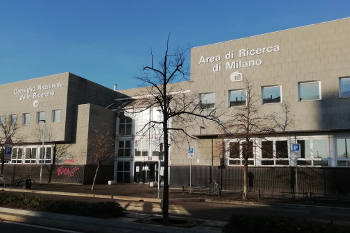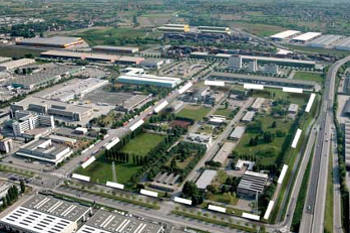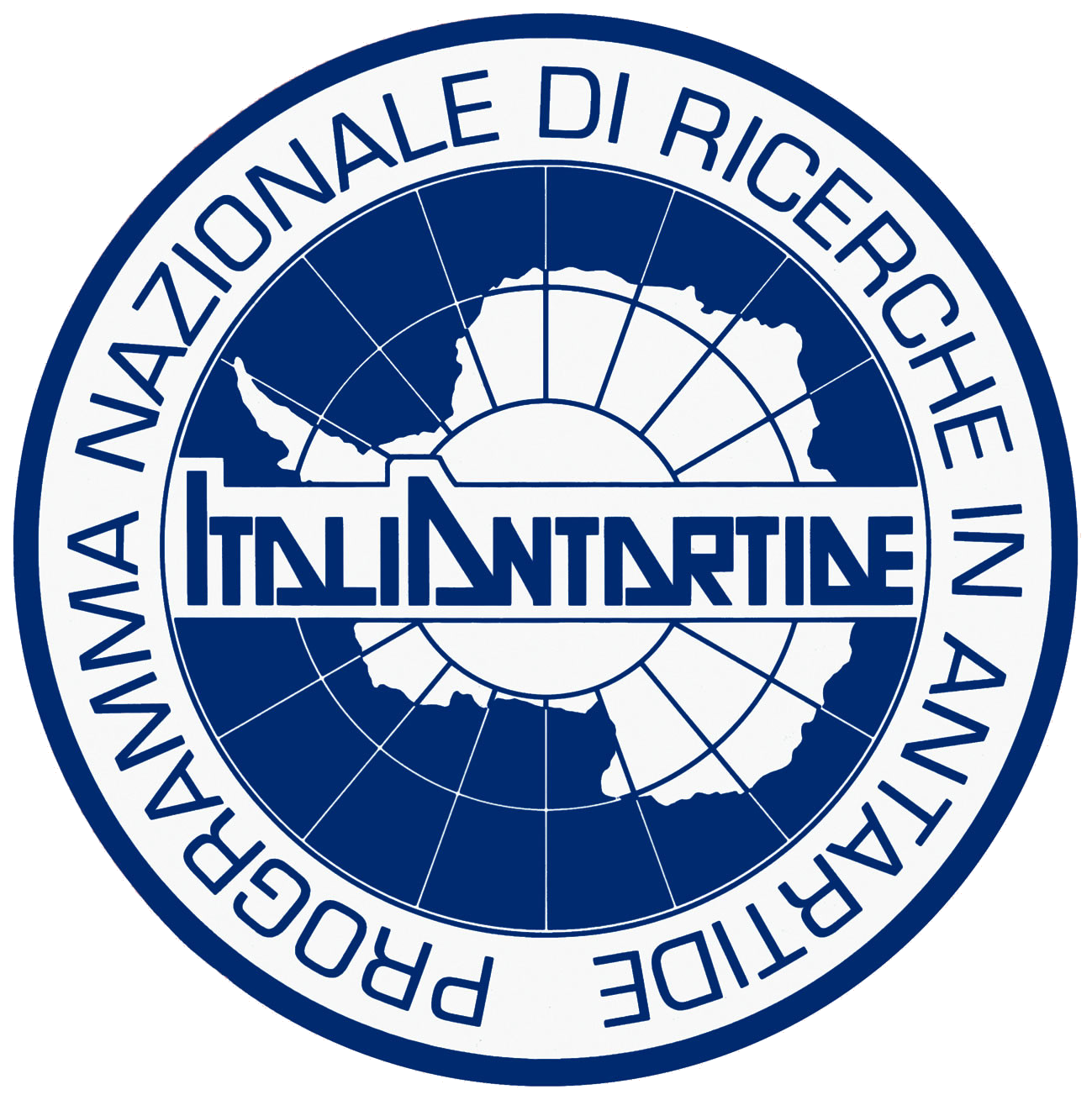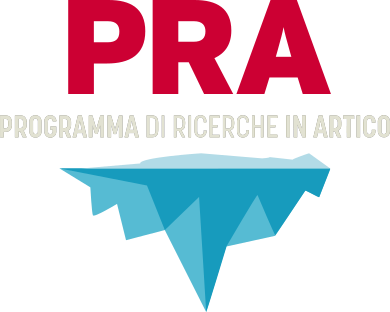Institute
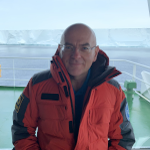 ANTONELLI GIUSEPPE - Segretario amministrativo
ANTONELLI GIUSEPPE - Segretario amministrativo
E-mail: giuseppe.antonelli AT cnr.it
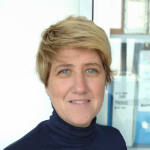 CESTER VALENTINA
CESTER VALENTINA
E-mail: valentina.cester AT cnr.it
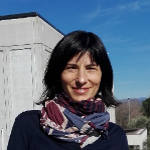 CIALLI PAMELA
CIALLI PAMELA
E-mail: pamela.cialli AT cnr.it
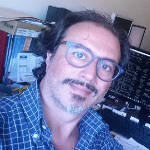 COSENZA ALESSANDRO
COSENZA ALESSANDRO
E-mail: alessandro.cosenza AT cnr.it
 DI LEO GUGLIELMO
DI LEO GUGLIELMO
E-mail: guglielmo.dileo AT cnr.it
 NOGAROTTO ALESSIO
NOGAROTTO ALESSIO
E-mail: alessio.nogarotto AT cnr.it
SACCHETTO ALESSIO
E-mail: alessio.sacchetto AT cnr.it
 ZANELLA JACOPO
ZANELLA JACOPO
E-mail: jacopo.zanella AT cnr.it
 ZANOTTO EMANUELA
ZANOTTO EMANUELA
E-mail: emanuela.zanotto AT cnr.it
Where we are: the secondary office of the Institute of Polar Sciences of Bologna is located in the Research Area of Bologna. The ISP occupies a total area (offices and laboratories) of about 300 m2, distributed between 2 buildings, that are partly shared with ISAC (Institute of Atmospheric and Climate Science) and ISMAR (Institute of Marine Sciences) staff.
How to find us:
- by train: from Bologna Centrale train station you can take a taxi that will take you to your destination in 5 minutes, or you can take bus nr. 87 or nr. 37;
- by car: from the motorway take the Bologna Arcoveggio exit, from the ring road take exit no. 5, Lame District;
- by plane: from the Guglielmo Marconi airport you can take the Aerobus BLQ shuttle to the railway station, then a scheduled urban bus (as above), or you can take a taxi (cotabo.it, Phone:+39 051-372727 or taxibologna.it, Phone:+39 051-4590) which will take you to your destination in about 10 minutes.
Contact
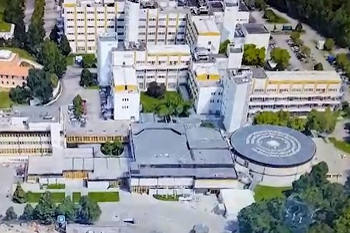 ISP Secondary office of Bologna
ISP Secondary office of Bologna
Responsable
Dr Stefano Miserocchi
E-mail: responsabile_bo AT isp.cnr.it
c/o Area della Ricerca di Bologna
Via P. Gobetti, 101 - 40129 Bologna (BO)
Phone:+39 051 6398880
Fax: +39 051 6398939
MAP
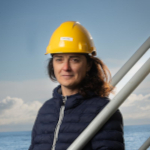 Institute of Polar Science (CNR-ISP)
Institute of Polar Science (CNR-ISP)
GIULIANA PANIERI Director
Giuliana Panieri is the new Director of the Institute of Polar Sciences, and her main interests are the study of extreme marine environments and their connections with climate change in the Arctic and elsewhere. For the last 12 years, she has been a full professor of Geology at the Department of Geosciences of the Arctic University of Norway. She has worked at ISMAR CNR (Italy) and at international universities in the USA, Spain, Germany and France. She has served as President of the Biogeosciences Division and Secretary General of the European Geosciences Union (EGU), managing and coordinating numerous national and international projects. Giuliana has published numerous scientific works, has been a book editor, and has been invited several times as a keynote speaker at international conferences. She has led numerous expeditions in the Arctic Oceans. Lately, she has been keen on developing tools for Ocean Literacy and supporting the UN Sustainable Development Goals, implementing specific tasks and deliverables within the framework of numerous national and international projects.
![]() https://orcid.org/0000-0001-9411-1729 Scopus - Author ID: 56135838100 Loop profile: 835890
https://orcid.org/0000-0001-9411-1729 Scopus - Author ID: 56135838100 Loop profile: 835890
E-mail: direttore.isp AT cnr.it
c/o Campus Scientifico - Università Ca' Foscari Venezia
Via Torino, 155
30172 VENEZIA MESTRE (VE)
Previous directors:
• Mauro Sclavo - Interim Director (From 1st May 2024 until 31st January 2025)
• Carlo Barbante (From 1st May 2020 until 30th April 2024)
• Leonardo Langone - Interim Director (From 1st June 2019 until 30th April 2020)
There are no active fellowships
Where we are: the Institute of Polar Sciences occupies the 2nd floor of the DELTA building in the new Scientific Campus of Ca’ Foscari University (address: via Torino, 155, Venezia-Mestre). The new Scientific Campus of Mestre is a modern building complex consisting of five new buildings, two existing buildings and a new university residence.
How to find us: GPS coordinates: Lat. 45, 477790 - Long. 12, 254480 - UTM 33N 285419-5039695 - MAP
- by train: Venezia-Mestre railway station, bus Nr. 31H, stop Torino-Università, or bus Nr. 43, stop Torino-Università. From Institute to railway station, bus Nr. 32H, or Nr. 43. Porto Marghera railway station, 10-15 min walk;
- by car: the Institute can be reached by car with the possibility of parking temporarily inside the campus. Coming from Padua, take exit Venezia, 8 min, 5.3 Km;
- by plane: the nearest airport is Venice Marco Polo Airport. From the airport, bus Nr. 15 (to railway station of Venezia-Mestre), then bus Nr. 31H, stop Torino-Università, or Nr. 43, stop Torino-Università.
The Institute of Polar Sciences (ISP) of the National Research Council was born on June 1st, 2019 with act n.81 on 31/05/2019 of President Inguscio. The idea of a Polar Institute has its roots in research activities, which have expanded over time, starting from the first years of Antarctic research in 1985. The construction of the Italian base in Antarctica (MZS station) before and the base in the Arctic (DI station) afterwards, has allowed the development of two generations of polar researchers who have made these remote environments their natural laboratory and their home away from home.
The National Research Program in Antarctica (PNRA)
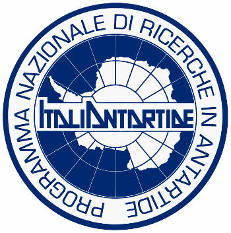 Since its first expeditions in 1968, 1973 and 1978, the CNR has strongly supported the diplomatic action of the MAECI (Ministry of Foreign Affairs and International Cooperation) which led to the accession of Italy to the Antarctic Treaty. The CNR initially contributed to identifying the construction site of the Italian station Mario Zucchelli and is currently coordinating the different lines of scientific activity of the National Research Program in Antarctica (PNRA). The implementation of research in Antarctica is carried out by the national scientific community, of which 51% are university research groups, 23% CNR research groups, 9% from INGV, 5% from ENEA, 4 % from OGS and INAF and the remaining 4 % is carried out by other institutions. The scientific priorities identified within the framework of the National Research Program in Antarctica, are mostly multidisciplinary, and can be traced around the following topics: dynamics of the atmosphere and climate processes, dynamics of the polar ice cap, solid earth dynamics, polar ocean dynamics, Sun-Earth relationships and space-weather, the universe above Antarctica, evolution, adaptation and biodiversity, humankind in extreme environments, environmental contamination, paleoclimate, environmental issues and risks, as well as technology: innovation and experimentation. In many of these research areas, the CNR’s activity, thanks to its research network, is at an excellent level, although it is still fragmented into numerous institutes belonging to various departments.
Since its first expeditions in 1968, 1973 and 1978, the CNR has strongly supported the diplomatic action of the MAECI (Ministry of Foreign Affairs and International Cooperation) which led to the accession of Italy to the Antarctic Treaty. The CNR initially contributed to identifying the construction site of the Italian station Mario Zucchelli and is currently coordinating the different lines of scientific activity of the National Research Program in Antarctica (PNRA). The implementation of research in Antarctica is carried out by the national scientific community, of which 51% are university research groups, 23% CNR research groups, 9% from INGV, 5% from ENEA, 4 % from OGS and INAF and the remaining 4 % is carried out by other institutions. The scientific priorities identified within the framework of the National Research Program in Antarctica, are mostly multidisciplinary, and can be traced around the following topics: dynamics of the atmosphere and climate processes, dynamics of the polar ice cap, solid earth dynamics, polar ocean dynamics, Sun-Earth relationships and space-weather, the universe above Antarctica, evolution, adaptation and biodiversity, humankind in extreme environments, environmental contamination, paleoclimate, environmental issues and risks, as well as technology: innovation and experimentation. In many of these research areas, the CNR’s activity, thanks to its research network, is at an excellent level, although it is still fragmented into numerous institutes belonging to various departments.
The Institute Advisory Board (Art. 13, Regolamento Organizzazione e Funzionamento CNR del 2019) consists of the Director, who presides over it, six elected representatives of the researchers and technologists of the Institute and one technical-administrative staff representative.
Previous Advisory Board
The ISP Advisory Board members are:
.
.
.
.
.
.
.
.

Giuliana Panieri
M.Sclavo (until 2024/31/01)
C.Barbante (until 2024/30/04)
Warren Raymond Lee Cairns
(Representative of the
Researchers and Technologists)
Pamela Cialli
(Representative of the
Technical-Administrative staff) 
Fabiana Corami
(Representative of the
Researchers and Technologists)
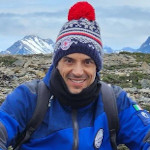
Francesco Filiciotto
(Representative of the
Researchers and Technologists) 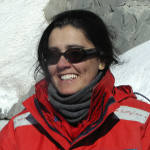
Angelina Lo Giudice
(Representative of the
Researchers and Technologists)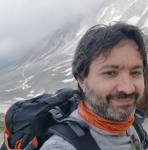
Angelo Lupi
(Representative of the
Researchers and Technologists)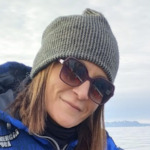
Francesca Spataro
(Representative of the
Researchers and Technologists)
December 21, 2019 - December 19, 2023
Director: Carlo Barbante
Representatives of the researchers and technologists: Maurizio Azzaro, Fabiana Corami, Federico Giglio, Elena Gregoris, Mauro Mazzola, Rosamaria Salvatori
Representative technical-administrative staff: Alessandro Cosenza
The CNR is present in various international coordination and scientific planning organizations in the Arctic and Antarctica. These include the International Arctic Science Committee (IASC), the European Polar Board (EPB), the Forum of Arctic Research Operators (FARO), the Ny-Ålesund Scientific Managers Committee (NySMAC) and the Sustaining Arctic Observing Networks (SAON).
Furthermore, thanks to signed treaties or political agreements, the CNR actively supports the presence of our country, with its experts, in scientific organizations, committees and working groups. CNR researchers participate to the Working and Expert Groups of the Arctic Council (AC). With regards to Antarctica, the CNR takes an active part in the various permanent committees of the Scientific Committee on Antarctic Research (SCAR).
ISP is strongly committed to guaranteeing the participation of the CNR in the SIOS (Svalbard Integrated Arctic Earth Observing System) initiative whose purpose is to integrate, optimize and coordinate resources and research in the Svalbard archipelago at an international level.
In this context, the Institute of Polar Sciences (ISP) supports the CNR’s representation on international bodies with the presence of:
| Acronym | Organisation | Name | Role |
|---|---|---|---|
| Arctic Council - Arctic Contaminants Action Programme
POPs and Mercury Working group |
Warren Cairns | Component | |
| Arctic Council - Expert Group on Black Carbon and Methane | Stefania Gilardoni | Component | |
| Arctic Council - Arctic Monitoring & Assessment Programme | Nicoletta Ademollo, Vito Vitale | Components | |
| Arctic Council - Arctic Monitoring & Assessment Programme
Mercury Working group and POPs Working group |
Warren Cairns | Component | |
| Association of Polar Early Career Scientists National Committees |
Andrea Spolaor | Component | |
| Arctic Research Icebreaker Consortium | Leonardo Langone | CNR reprensentative | |
| Marine Invasive Alien Species in Arctic Waters | Maurizio Azzaro | National Delegate | |
| European Polar Board | Vito Vitale | CNR reprensentative | |
| Forum of Arctic Research Operators | Mauro Mazzola | National reprensentative | |
| An International Study of the Marine Biogeochemical Cycles of Trace Elements and Isotopes | Paolo Montagna | National Delegate | |
| International Arctic Science Committee | Carlo Barbante | National Delegate | |
| International Arctic Science Committee
Cryosphere Working Group |
Andrea Spolaor | Component | |
| International Arctic Science Committee
Marine Working Group |
Tommaso Tesi | Component | |
| International Permafrost Association | Renato R. Colucci | National Delegate | |
| Ny-Ålesund Science Managers Committee | Mauro Mazzola, Andrea Spolaor, ad interim | National representatives | |
| Sustaining Arctic Observing Networks | Vito Vitale | Component | |
| Synoptic Arctic Survey Scientific Steering Committee | Maurizio Azzaro | Component | |
| Scientific Committee on Antarctic Research
Input Pathways of Persistent Organic Pollutants to Antarctica |
Nicoletta Ademollo | Component | |
| Svalbard Integrated Arctic Earth Observing System
Board of Director |
Vito Vitale | Component | |
| Svalbard Integrated Arctic Earth Observing System
Research Infrastructure Coordination Committee |
Mauro Mazzola, Stefania Gilardoni | Components | |
| Svalbard Integrated Arctic Earth Observing System
SIOS Data Management System Working Group |
Giulio Verazzo | Component | |
| United Nations, Division for Ocean Affairs and the Law of the Sea,
World Ocean Assessment III |
Maurizio Azzaro | Expert |
Where we are
The building, in pure Art Nouveau style, is located on the Straits of Messina, in the shadow of the Montorsoli Lantern. Thanks to this position, it dominates the waters of the Straits and the Port. The building consists of a central body with three floors, which houses offices and studios, and two wings, with the laboratories. The ISP building in Messina is shared with the Institute for Biological Resources and Marine Biotechnologies (CNR-IRBIM) and there is also a park of about 10,000 square meters, where there is the main auditorium in a building that was originally the Royal National Shooting range.
How to find us
- By train: if you come from the peninsula, get off at the Villa San Giovanni rail station, then board the BlueJet fast ship heading towards Messina Porto Storico. Otherwise if you come from a Sicilian town, get off at Messina Centrale rail station. Once you arrive in Messina, call our office to arrange transfer by car to the Institute.
- By plane: Catania Fontanarossa is the closest airport. From the airport, take the SAIS-Autolinee bus to Messina Central Station. Once you arrive in Messina, call our office to arrange the transfer by car to the Institute.
- By car: the institute can be reached by car and there is on-site temporary parking available. If you come from the peninsula, once you reach Villa San Giovanni you can board the Caronte ship (runs every 40 minutes) and then, once in Messina, continue by car to the Institute. If, on the other hand, you come from a Sicilian town, take the A18 Messina-Catania, exit at Messina Centro and continue towards the institute following the directions here.
Contact
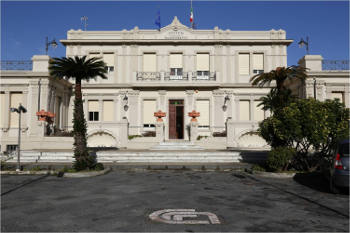 ISP Secondary office of Messina
ISP Secondary office of Messina
Responsable
Dr. Maurizio Azzaro
E-mail: responsabile_me AT cnr.it
Spianata S. Raineri 86 - 98122 Messina (ME)
Phone:+39 090 601 5415
Fax: +39 090 669 007
MAP
Where we are
The secondary office of Institute of Polar Sciences of Milan is located at the CNR Area della Ricerca 3 Milano-Bicocca, Via Cozzi 53 - 20126 Milano. Map
How to find us
- by train: Greco-Pirelli Station
- by car: From the Turin-Venice highway (A4), take the "Milano - viale Zara" exit, head towards the center of Milan, then go to viale Sarca, the first street parallel to the one you are traveling on the left side. Continuing along Viale Sarca in the same direction of travel you will meet the University of Milano-Bicocca on your left, after about a kilometer.
- by plane: Linate Airport, take the bus n. 73 (direction S. Babila M1) and get off at Precotto. Then take the tram n.7 and get off at Greco Pirelli. Malpensa Airport: take the Malpensa Express train. From Cadorna station take the M1 line (direction: Sesto 1° Maggio). Then take the tram n. 7 and get off at Greco Pirelli. Orio al Serio airport: take the bus toward Stazione Centrale, then take the bus n. 87.
More...
The mission of the ISP is to contribute to increasing the quality of Italian scientific and technological research in the polar regions, and to provide knowledge on global changes in support of Italian and European environmental policies by the development of new technologies and survey methodologies.
The Institute aims to be a reference point for:
- CNR polar research; as ISP has extensive links to universities as well as national and international public and private bodies. ISP offers multidisciplinary skills and technologies that are essential to studying and protecting the environment;
- scientific personnel, able to make qualified contributions to the National Antarctic Research Programme (PNRA), the Arctic Research Programme (PRA) and European Commission projects through the development of research and monitoring activities;
- interdisciplinary polar cooperation and research, including the development of meetings, publications, research opportunities and complementary activities, and interacting with society;
- the standardisation of measurements and preparation methods to improve the quality of results, and the development of coordinated measures aimed at common research plans and/or general common objectives;
- the training of the next generation of polar scientists.
Fulfilling our mission will allow us to improve our understanding of the climatic changes taking place in the Arctic and Antarctic environments and possible future developments at both polar and global levels. Our studies address research issues related to both the chemical/geochemical and physical aspects of the poles using a multidisciplinary approach to protect these vulnerable extreme environments. The repercussions of climate change on these dynamics are still largely unknown and will require integrated research using long term multidisciplinary methods to understand them fully.
Open administration
The section Open Administration is organized according to Legislative Decree no. 33 of 14 March 2013 Reorganization of the discipline concerning the obligations for advertisement, transparency and diffusion of information by the public administration (GU Serie Generale n. 80, 05/04/2013), as amended by D.lgs. 25 May 2016 n. 97 (GU Serie Generale n. 132, 08/06/2016).
The manager of transparency and bribery prevention of Institute of Polar Sciences is Dr. Giulia Panieri, Director ISP-CNR (email direttore.isp AT cnr.it).
Provision of nomination (no.16 Date: 28/01/2025)
Invitations to tender and contracts
- year 2024
- year 2023
- year 2022
- year 2021
- year 2020
- year 2019
Previous directors:
• Mauro Sclavo - Interim Director (From 1st May 2024 until 31st January 2025)
• Carlo Barbante (From 1st May 2020 until 30th April 2024)
• Leonardo Langone - Interim Director (From 1st June 2019 until 30th April 2020)
Where we are:The secondary office of Institute of Polar Sciences of Padova is located at the CNR Research Area of Padova, Corso Stati Uniti,4 - 35127 Padova. Map
How to find us:
- by train: from the Padova train station take bus n. 7;
- by car: from the A4 highway, exit at Padova Est and take the direction Piove di Sacco/Chioggia for a couple of kilometers. Take the exit n. 13 which brings to Corso Stati Uniti. After an U turn the CNR entrance is about 100 m after the underpass. From A13 highw, exit at Padova Zona Industriale and turn left in Corso Stati Uniti. The CNR entrance is at about 2 km on the left side (go up to the U turn);
- by plane: from the Venice or Treviso airport, take the train from Venezia-Mestre (or Treviso) to Padova and follow the indications given above for train.
 Ministero dell'Universita e Ricerca
Ministero dell'Universita e Ricerca
Programma Ricerche Artico
Programma Nazionale di Ricerca in Antartide
 Ministero degli Affari Esteri e della Cooperazione Internazionale
Ministero degli Affari Esteri e della Cooperazione Internazionale
L'Italia e l’Artico
L’Italia e l’Antartide
CNR-ISP
National Research Council
Institute of Polar Sciences
c/o Scientific Campus - Ca' Foscari University Venice - Via Torino, 155 - 30172 VENEZIA MESTRE (VE)
Phone: +39 041 2348547 - E-mail: protocollo.isp AT pec.cnr.it
Fax: +39 041 2348 549 - Codice Fiscale: 80054330586 - P.I.:02118311006
Unless otherwise indicated, the content of this site is licensed : Attribution Non Commercial Share Alike 4.0 International (CC BY-NC-SA 4.0)
Privacy policy e Cookie policy - Transparent administration (CNR)
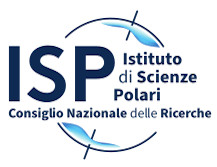






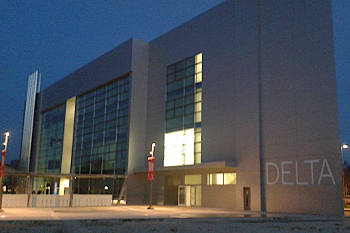
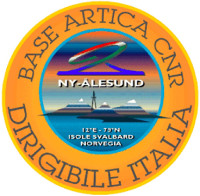 The Italian presence in the Arctic became permanent in the mid-nineties, thanks to the opening of the CNR station in the Svalbard Islands. In recent years, the interests of the Italian scientific community have been extended to other remote areas such as Greenland, areas of the Arctic Ocean, the Tibetan plateau and the Himalayas. In addition to the CNR, OGS, ENEA, INGV, INAF, ASI and some universities carry out research activities in these areas. In addition, Italy has strong economic interests in the Arctic with numerous industries that are active in this area, including ENI, Finmeccanica, Telespazio, E-geos, and Fincantieri. Since 1997 the has CNR carried out research in Ny-Ålesund in cooperation with national and international universities and other scientific institutions. The topics include climate, manmade pollution, instability of the ozone layer, the physical properties of aerosols and clouds in their role in radiation balances, ecology, genetics, physiology, biochemistry and the molecular and cellular biology of polar organisms, the optical properties of glacial surfaces, geochemistry, environment and permafrost, oceanography aimed at studying the transfer of energy and matter in relation to glacial coverage and, finally, historical and geographical studies that evaluate the Italian contribution to polar exploration and research. Recently there has been an intensification in the study of legal issues of specific to the Arctic with advice given to the Ministry of Foreign Affairs within the framework of the Arctic round table.
The Italian presence in the Arctic became permanent in the mid-nineties, thanks to the opening of the CNR station in the Svalbard Islands. In recent years, the interests of the Italian scientific community have been extended to other remote areas such as Greenland, areas of the Arctic Ocean, the Tibetan plateau and the Himalayas. In addition to the CNR, OGS, ENEA, INGV, INAF, ASI and some universities carry out research activities in these areas. In addition, Italy has strong economic interests in the Arctic with numerous industries that are active in this area, including ENI, Finmeccanica, Telespazio, E-geos, and Fincantieri. Since 1997 the has CNR carried out research in Ny-Ålesund in cooperation with national and international universities and other scientific institutions. The topics include climate, manmade pollution, instability of the ozone layer, the physical properties of aerosols and clouds in their role in radiation balances, ecology, genetics, physiology, biochemistry and the molecular and cellular biology of polar organisms, the optical properties of glacial surfaces, geochemistry, environment and permafrost, oceanography aimed at studying the transfer of energy and matter in relation to glacial coverage and, finally, historical and geographical studies that evaluate the Italian contribution to polar exploration and research. Recently there has been an intensification in the study of legal issues of specific to the Arctic with advice given to the Ministry of Foreign Affairs within the framework of the Arctic round table. 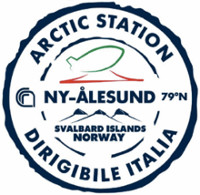 Contrary to the National Antarctic Research Programme, research in the Arctic has not received structured funding until very recently. However, within the CNR, the Department of Earth Sciences and Technologies for the Environment (
Contrary to the National Antarctic Research Programme, research in the Arctic has not received structured funding until very recently. However, within the CNR, the Department of Earth Sciences and Technologies for the Environment (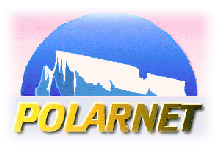 On December 6th, 2006, the CNR, with the
On December 6th, 2006, the CNR, with the 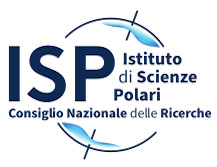 Italian researchers involved in research in polar areas and other remote areas of the planet are involved in highly interdisciplinary research in life sciences, Earth and climate sciences, marine sciences, atmospheric and space sciences, in addition to technological innovation. But national research in polar areas has often been very fragmented and scarcely visible in an international context, because, although carried out within highly qualified research groups, they have so far only been individually recognizable and not associated with a national structure.
Italian researchers involved in research in polar areas and other remote areas of the planet are involved in highly interdisciplinary research in life sciences, Earth and climate sciences, marine sciences, atmospheric and space sciences, in addition to technological innovation. But national research in polar areas has often been very fragmented and scarcely visible in an international context, because, although carried out within highly qualified research groups, they have so far only been individually recognizable and not associated with a national structure. 